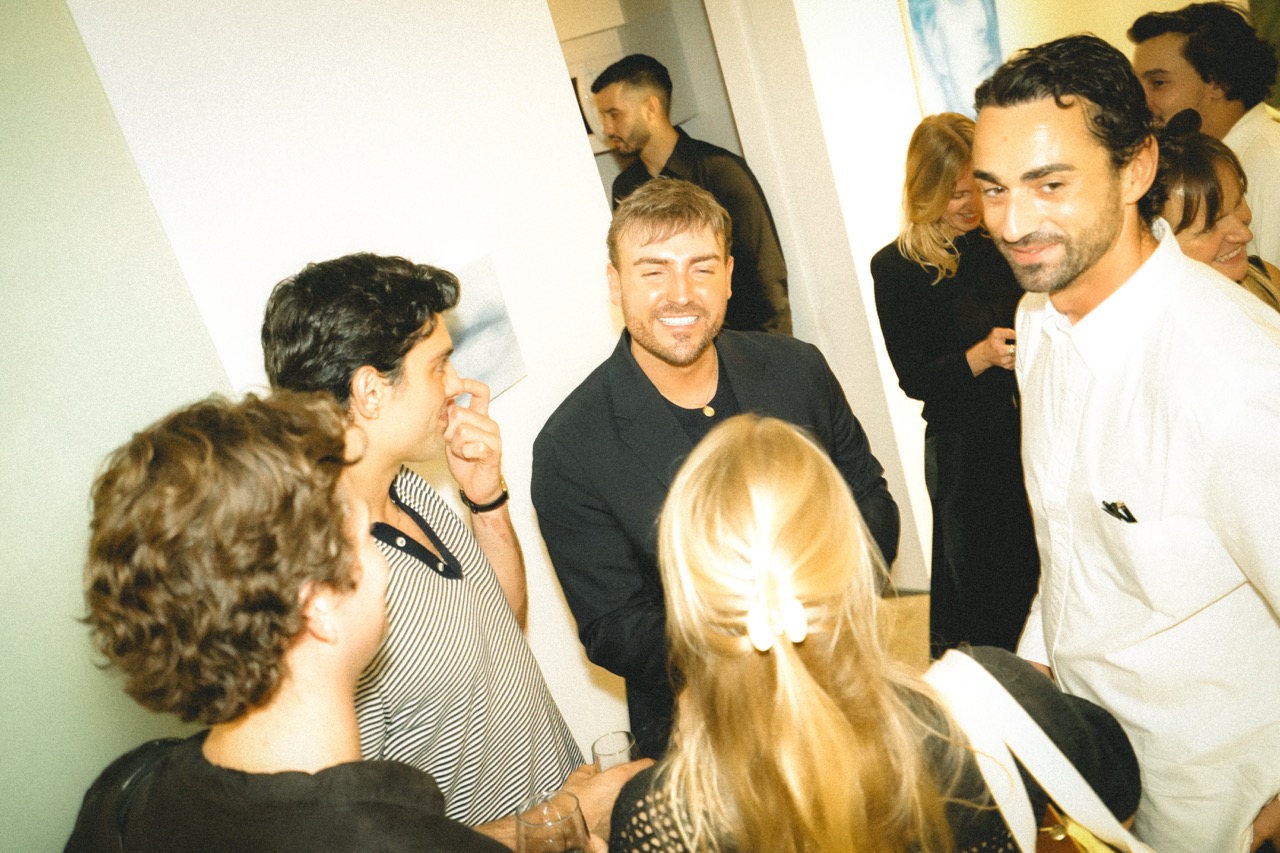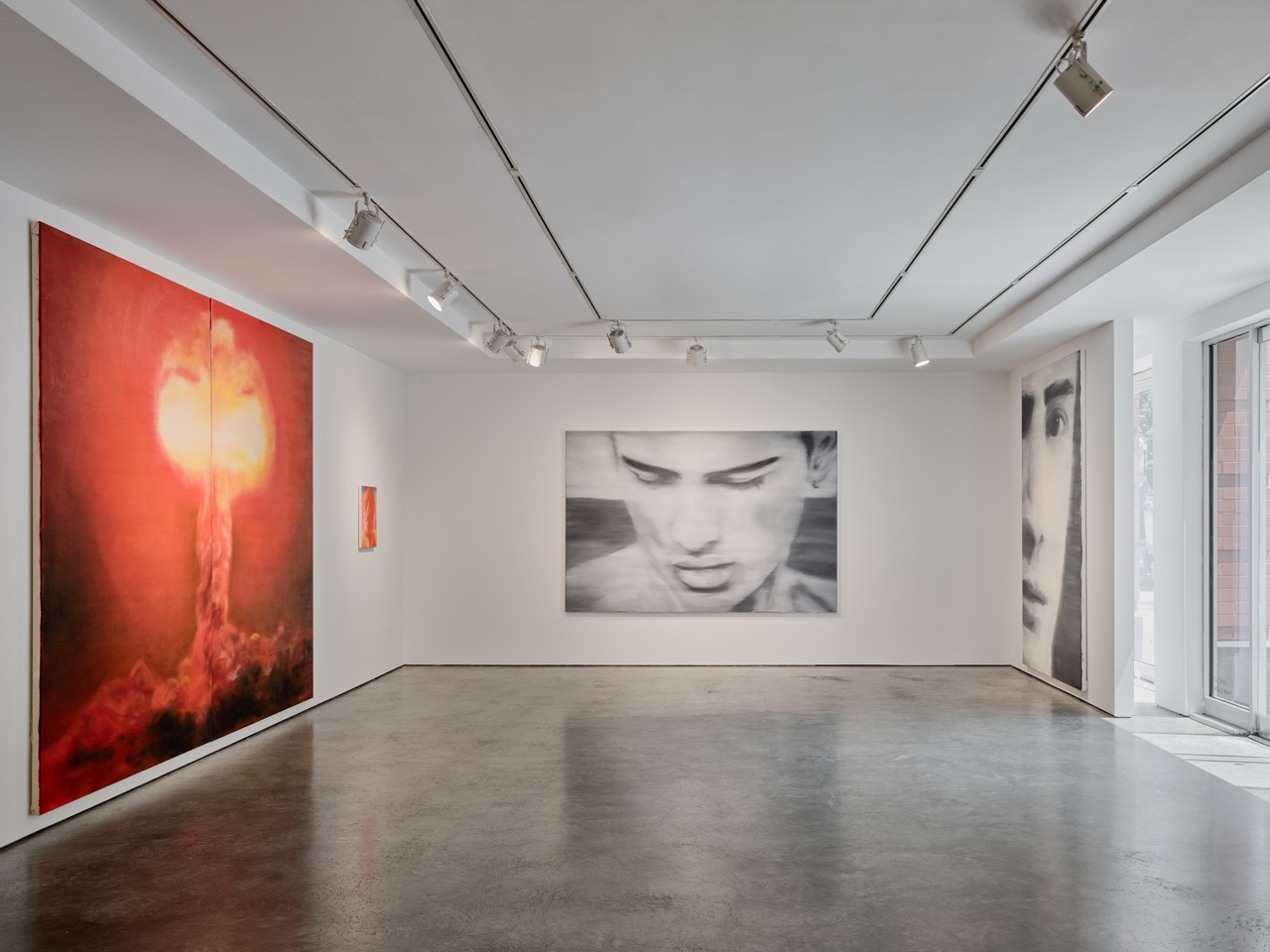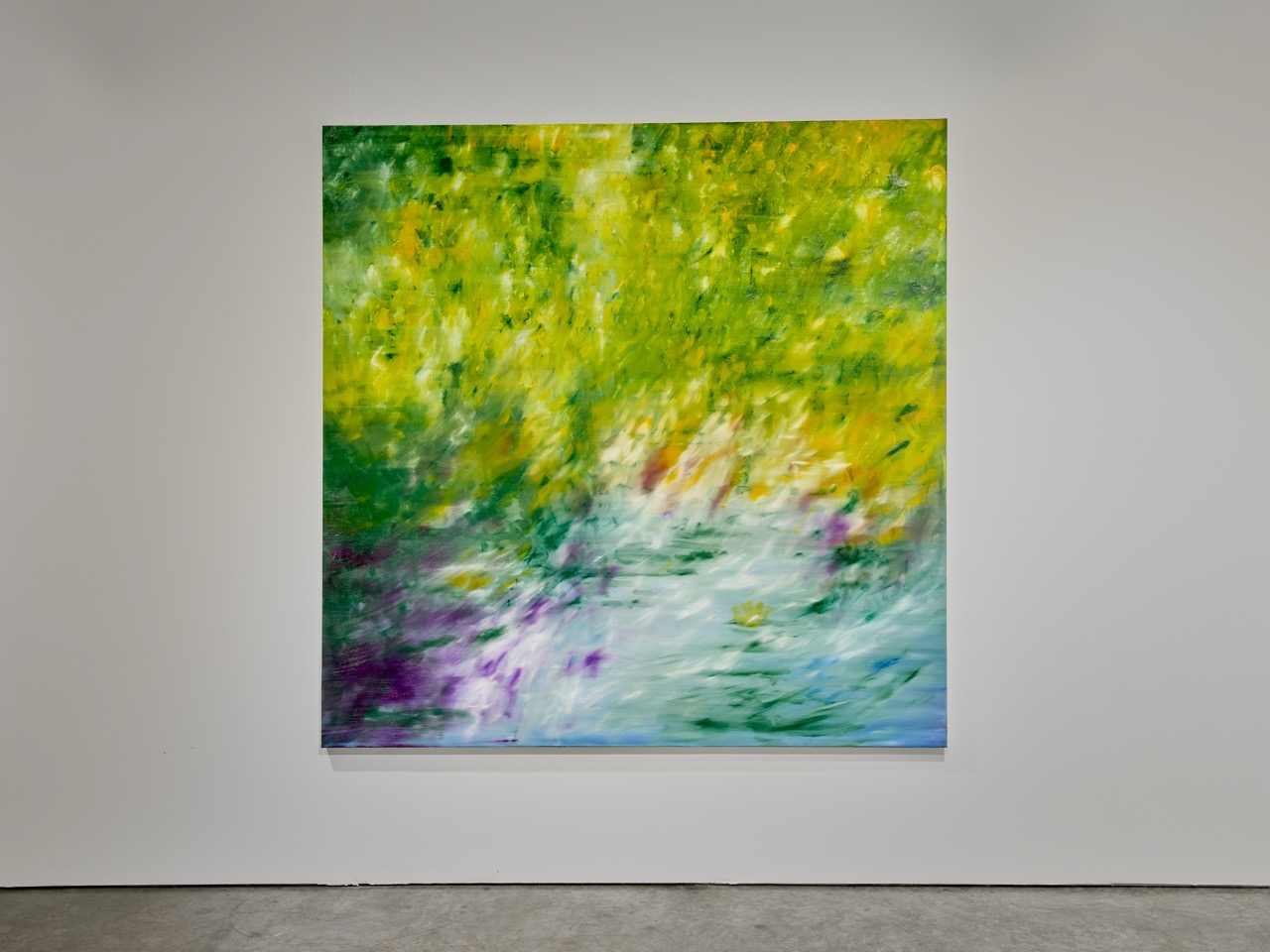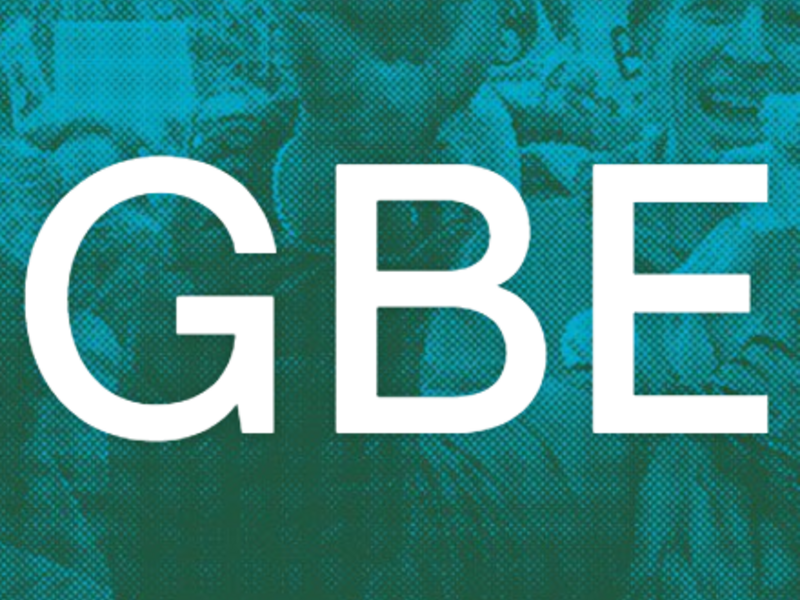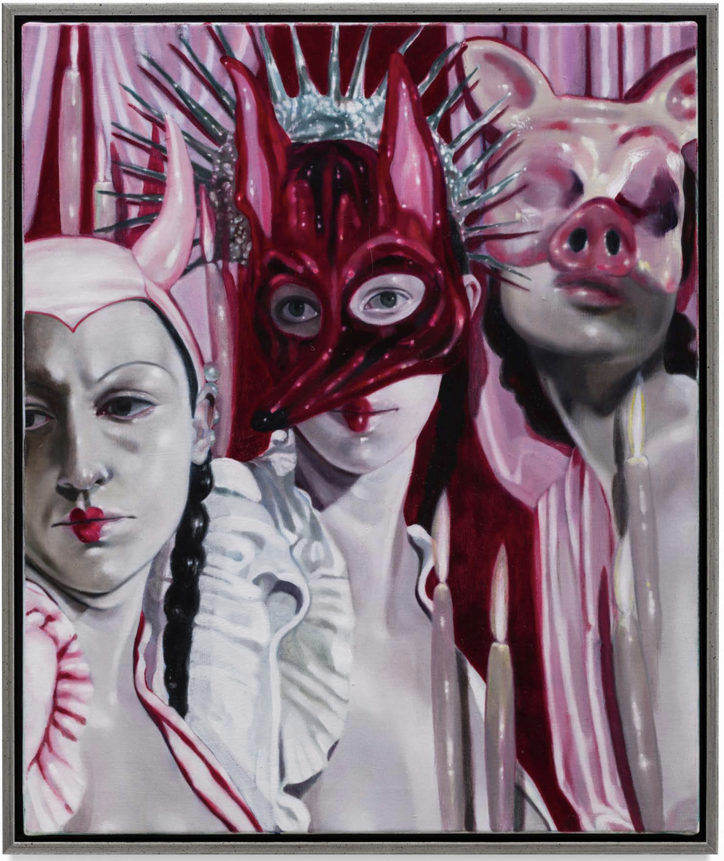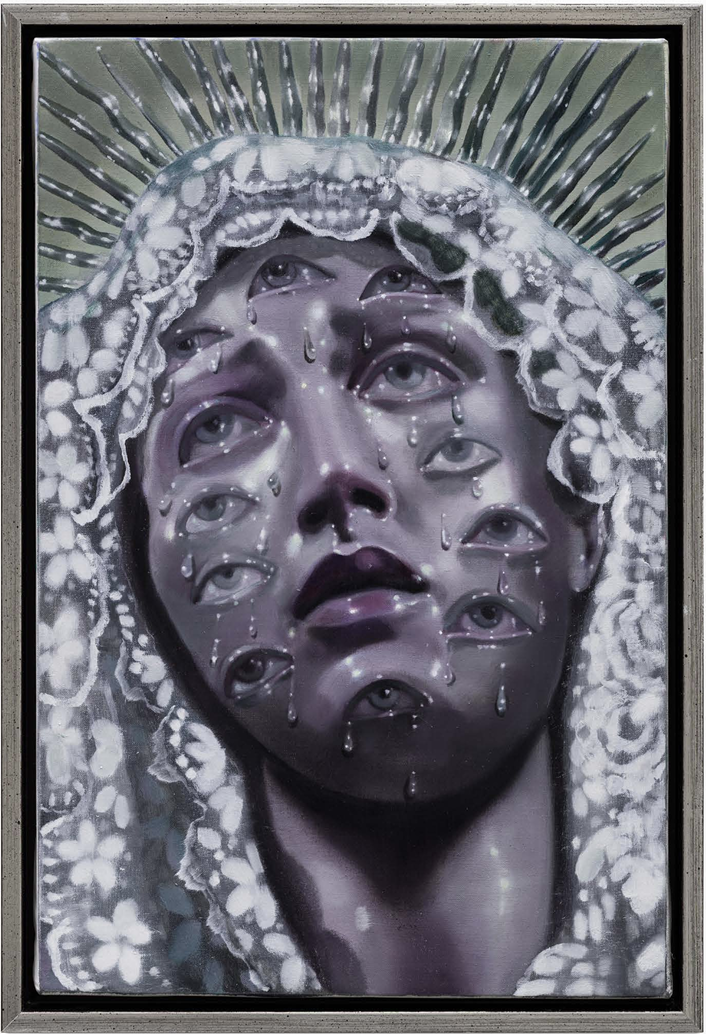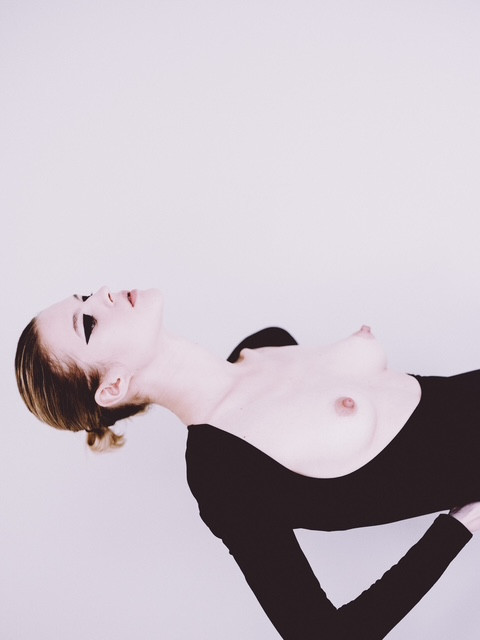Meriem Bennani Conjures the Spirits of the Web
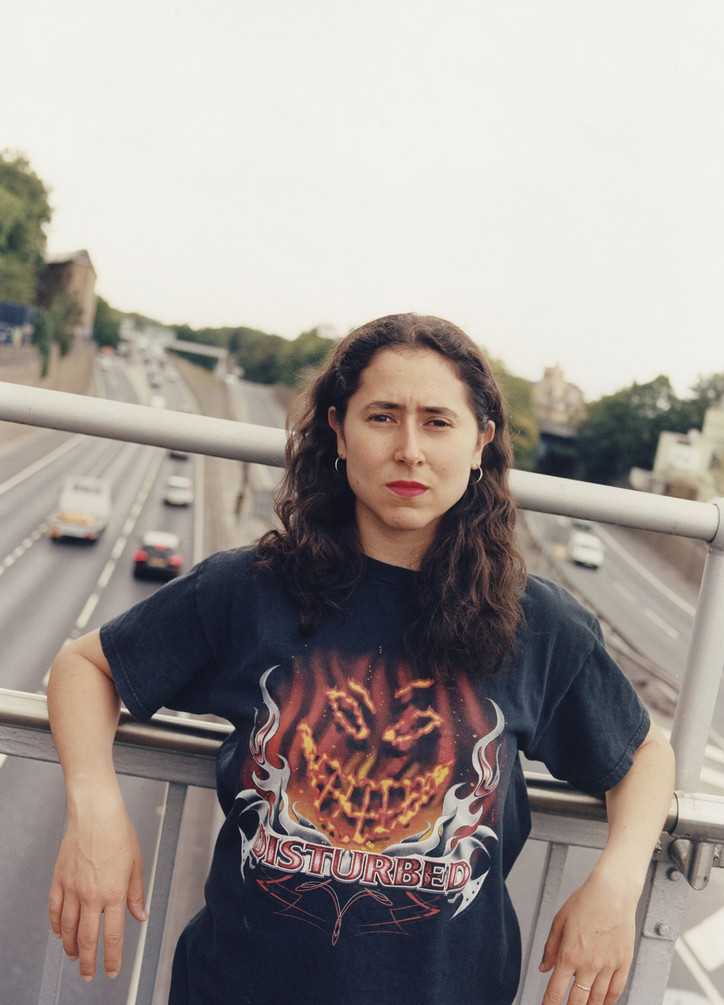
In her show at MoMA PS1, for example, a Rihanna-singing, CGI-animated fruit fly buzzed across numerous screens, serving as the guide to an internet-saturated, hyperglobalized Morocco. Gold pixels exploded at open-air markets, pedestrians suddenly multiplied, and video game-like sound effects blasted across family dinners. The result was a hilarious, immersive experience that awarded viewers the sensation of being inside a web browser with too many tabs left open.
Bennani’s insistence on playfulness means her work comes alive as much in museums and galleries as it does in public and on social media. Her Instagram account is a treasure trove of visual tricks and real-world absurdities, and her mock reality show about the fictitious hijab designer Fardaous Funjab was screened by the Public Art Fund on the digital billboards of Brooklyn’s Barclays Center. But whatever medium she works in, Bennani is always guided by humor and a drive for pleasure. At the opening of the PS1 exhibition, a three-year old was dancing among the screens, screaming with joy at the slapstick sound-effects. And at her after-party at New York’s The Kitchen, what is usually a dry affair for the Chelsea insiders turned into a full-blown Arab pop dance party. “To have fun and find pleasure, you know?” Bennani says. “That’s important to my work.”
But while her art might be accessible even for toddlers, it is not all fun and games. In the critically-acclaimed installation Siham & Hafida (2017), recently acquired by the Whitney, Bennani portrays two Moroccan chickha singers as they perform and display vastly divergent archetypes of femininity. The multi-channel video asks interesting questions about the fast-paced changes to female identity in a materially stagnant Morocco, where value-systems are being challenged by globalized consumerism, social media and Arab talent shows—if you can stay focused on the plot, that is. As the characters move through their scruffy hometown, Bennani lets a satellite dish glimmer with electricity, sends emoji-crabs scuttling across living rooms, and sets a swarm of pixelated butterflies fluttering across dilapidated rooftops, bestowing a drab reality with the sparkle of digital glitter.
This constant fluctuation between an underwhelming real- life world and a lively, dynamic virtual existence is what defines Meriem Bennani’s work. In 2018, this is the life we live—one moment watching cat videos or browsing our ex’s vacation photos, the next sweating it out in the subway or straight- faced answering a client’s questions. No other contemporary artist manages to portray this bifurcated experience as humorously and convincingly as Bennani. Fortunately, the art world has not been slow to notice. This year, Bennani is producing an interactive dance-battle for the Serpentine Gallery, opening a solo show at New York’s Signal Gallery, and presenting a sci-fi mockumentary at the Geneva Biennial of Moving Images. The film, dealing with gender, diaspora, and horny teenagers stuck in the bodies of middle-aged women, will be her most ambitious project to date.
“I want to play, you know,” Bennani says. “I just want to explore different things.”
This will be a busy year for you. Tell me about your new projects?
First, I’m doing a Park Night at the Serpentine. It’s a one-night show, and I’m interested in that format because it’s performative. I wanted to do something fun, so I will be doing a video game dance battle. I’m going to cast six dancers who will each get to choose a 3D character with special powers and imperfections. The dancers will then be motion-captured so the audience will see a dance battle between 3D characters on a big screen. It’s a mix between a video game and a TV show like The Voice, or America’ s Got Talent. But it’s also a serious competition. I think it will be fun.
You are also producing a new film?
Yes, it’s a kind of sci-fi. I will film it like a documentary, but it’s an actual film production. On a bigger scale than I’m used to. And it will then be presented in a specific, immersive, sculptural way. It’s set in a future world where teleportation is possible. But of course, rich places like America have set up barriers so immigrants can’t just teleport themselves into their countries. So all the immigrants who are intercepted end up at this island called The Caps. And because they got intercepted mid-teleportation, their bodies are all modified and distorted. What I’ m interested in is seeing how that would change culture, having a different relationship to your body and gender, age, all that stuff. The whole project is about immigration and diaspora and other in- between stages. Oh, and it’s narrated by a crocodile.
What interests you about the sci-fi format?
I think in the future different technologies are going to take over, and you’re going to be able to reverse age and gender. We’ll be able to change all our identity markers after we’re born. I’m trying to imagine what a Moroccan society would be like if you could change those aspects of yourself. If there was a different relationship to gender and age and beauty and what an able body is. What would that look like? I don’t have an answer, I’m just exploring.
Producing a sci-fi environment sounds extremely expensive. How will you go about that?
I’m shooting the film in Morocco, building a set that looks very normal, but where little hints and props make you feel like you’re in this sci-fi world. Most of the time, I will just be filming normal people who go about their neighborhood. For example, I’m going to film a party happening naturally. I’m not going to stage it, except for adding a few actors who will play characters from the future. So when we are shooting, we have these characters that look different and think differently about their bodies. And I will get to see how my family members and all these people from the neighborhood respond. How will they react? In a way, it’s role-playing.
Role-playing also plays a part in your earlier work. One could say that a lot of what happens on the internet and social media in general is role play.
Yeah, but I’m interested in thinking about what will happen when technology becomes biological. How it will all blend and it won’t be social media anymore. It will be the way we exist. In the film, some of the characters will be brain-uploads, where someone has uploaded his brain into someone else’s body. So I’m asking, What happens if a horny teenage boy has a problem with his body and the first one that is available is a sexy 50-year-old woman? Would he be touching his own body all the time, you know?
It’s the in-between spaces you are exploring. Between nations. Between genders. Between sexualities and bodies.
Yes, the whole film is about the idea of diaspora. What is that? To me, diaspora is like being suspended in between two states. You don’t really belong to your hometown, although that’s how you identify. But when you go back, you’re not accepted anymore. You’re looked upon as a foreigner. But in the place where you are living now, you’re also a foreigner. And not really belonging. So in the film, the physical manifestation of that feeling is this island in the middle of the Atlantic where illegally teleported people get stuck. They can’t go back and they can’t move on to America. It’s an in-between state.
You have lived nine years in New York yourself. Do you feel part of the Moroccan diaspora?
I feel like I’m part of many diasporas. Different subcultures, you know. But none of them is about being Moroccan. I think if I lived in Paris, I would probably feel that, because there are so many Moroccans. Whereas here in New York, it’s more a feeling of being in between different cultures, in between groups.
One thing I really like about your work is how it blends and fuses the digital and physical aspects of our lives. How do you balance those online and offline aspects in your own everyday life?
For me, honestly, there is not much of a difference. All day long at work, I listen to music on the computer. And I’m also dancing all the time. Which is so physical. Right now, I’m listening to music and making the characters for the dance battle at the Serpentine, studying dance movements.
Is dance a way of doing something physical after all those hours in front of the screen?
I just love it. Honestly, dancing just comes from the fact that it makes me really happy. Whatever I do, I always try to simulate the state of mind you have when making art. That’s the best way of doing anything. I think maybe it’s the endorphins. Things that make you happy, they give you so many ideas. And my way of doing that is to just make sure it’s fun, you know?
And that definitely comes through in your work. It’s always fun.
Yeah. But it’s not always possible to have fun, you know? I think it’s going to be harder and harder. Because the more you’re doing shows, the more making art feels like work. And I don’t want to care about work in that obsessive way anymore. I’m at a point where I’ve become really turned off by how obsessed with productivity New York is. I want to learn to have pleasure outside of making work and seeing it come to fruition. You know, I’ m so focused on work that if I party once, I feel guilty and have to work all the next day. Like everyone in New York. We’re all sick. Honestly. I think it’s sick. For example, whenever I used to go home to Morocco, I felt that I had to film and document everything. I couldn’t enjoy having a conversation with family members without thinking of capturing it.
Yeah, as an artist or writer, you risk not living life in the first person. It’s like David Foster Wallace says, “I’d somehow chosen to cast my lot with my life’s drama’s supposed audience instead of with the drama itself.” You end up living floating behind your own head.
Totally. You’re like your own surveillance system. As an artist or writer, your work is so intimate. So much of it is constructed in your head to begin with. You’re never not working. That myth is true. And I think that makes it even more important to take a breather from work. When you talk to any New York artist, they always say “I don’t take vacations, that’s not something I do.” That’s like the cool thing to say. Oh, I’m so obsessed with work. And I used to be like that too, but now I’m like, Well, fuck it. Because you do enter an economy as an artist. Once you start showing regularly, you enter into a full work-year rhythm. So you need a vacation and that’s something I only recently learned. To take a stupid vacation. You know, cocktails, beach, doing nothing. And it’s amazing. When you put yourself in a situation where you say, I’m not going here to work. I’m just here to have cocktails and suntan. You’re actually so much more productive, in the background of your head. It’s kind of like meditation. But you have to break through the anxiety first. It’s like with relationships, right? You have to want that for yourself. And only then can you give it to another person.






